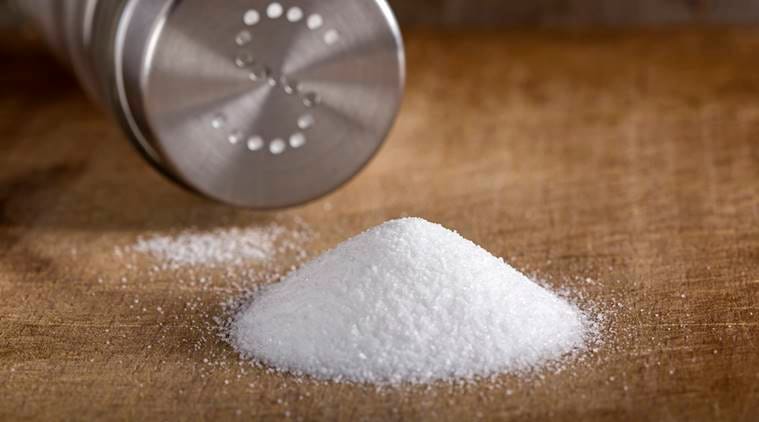76.3 per cent of Indian households consume adequately iodised salt: Survey
According to WHO guidelines, a daily iodine intake of 150 microgram is required to prevent iodine deficiency disorders and this can be achieved by using adequately iodised salt, i.e. salt containing a minimum of 15 parts per million (ppm) of iodine.

Three out of every four Indian households consume adequately iodised salt, necessary for optimal mental and physical development, reflecting the progress made by the country in this regard, a recent survey showed.
The India Iodine Survey 2018-19 was conducted by Nutrition International, a global nutrition organisation, in collaboration with AIIMS, New Delhi, Association for Indian Coalition for the Control of Iodine Deficiency Disorders (ICCIDD) and Kantar.
It covered all 29 states and seven Union Territories of the country, and included a total of 21,406 households.
According to WHO guidelines, a daily iodine intake of 150 microgram is required to prevent iodine deficiency disorders and this can be achieved by using adequately iodised salt, i.e. salt containing a minimum of 15 parts per million (ppm) of iodine.
Jammu and Kashmir, Manipur, Mizoram and Nagaland are front-runner states with more than 99 per cent of households having access to adequately iodised salt, the survey stated.
It also revealed that 13 out of 36 states have already achieved Universal Salt Iodisation (USI) with more than 90 per cent of households having access to adequately iodised salt.
ALSO READ | Kitchen hacks: Excess salt in your food? Here are some easy ways to balance it out
The survey found that 76.3 per cent of Indian households consume adequately iodised salt, meaning salt with more than or equal to 15 ppm of iodine, a statement said.
“The results signify the progress made by India towards Universal Salt Iodisation (USI) which has a target of reaching 90 per cent of the population with adequately iodised salt.
“The results also convey the need to step up efforts to ensure all households consume adequately iodised salt while sustaining the gains achieved over the years to protect everyone from the risk of iodine deficiency disorders,” it added.
While the releasing the survey results, Dr Vinod Paul, Member (Health and Nutrition), NITI Aayog, said India Iodine Survey 2018-19 comes at a crucial time when the entire country is celebrating ‘Poshan Maah’.
“The results show that industry regulators, state and central government and other stakeholders have played a critical role in the success so far. It is now time for us to step up our efforts to achieve full USI by 2022.
“The survey is a very good effort to scientifically estimate the progress so far and we need to accelerate progress in states that are facing challenges. I would be happy to organise a meeting of the stakeholders and the states at the NITI Aayog to take this discussion forward and devise a strategy to achieve USI by 2022,” Paul said.
Iodine is a vital micronutrient needed regularly in small quantities. Deficiency of iodine can result in a range of disabilities and disorders such as goitre, hypothyroidism, cretinism, abortion, still-birth, mental retardation and psychomotor defects. Children born in iodine-deficient areas may have up to 13.5 IQ points less than those born in iodine-sufficient areas.
A majority of these consequences are invisible and irreversible but can be prevented. Fortifying cooking salt with iodine is the easiest and most cost-effective way to address this problem.
The survey tested the iodine content in samples of cooking salt from households to estimate the coverage of the use of adequately iodised salt, the statement said.
In addition, the survey also studied the urinary iodine concentration in samples from pregnant women, lactating women and non-pregnant non-lactating women of reproductive age (15 to 49 years) to estimate the iodine status among them. Notably, the median Urinary Iodine Concentration (µg/L) among these three categories of women was found to be adequate as per WHO guidelines.
The India Iodine Survey 2018-19 further revealed that awareness about iodised salt was at 62.2 per cent in urban areas and at 50.5 per cent in rural areas.
Around 56 per cent of consumers identified iodised salt at the time of purchase from the word “iodised” printed on the packet, while around 21 per cent relied on information from the shopkeeper, it said.
In urban India, 47.8 per cent bought salt based on the brand, whereas in rural India, most purchases (41.2 per cent) were made on the basis of the price, the survey stated.
“For more than 20 years, Nutrition International has been working with the government of India and partners to eliminate iodine deficiency disorders and we are proud of the progress we have collectively made to reduce the risk of iodine deficiency disorders across the country.
“We are confident that the results from the India Iodine Survey 2018-19 will guide policy decision and interventions needed to sustain the progress and step up efforts to reach Universal Salt Iodisaiton,” Andrew O Connell, Nutrition International’s Regional Director, Asia, said.
Source: Read Full Article



